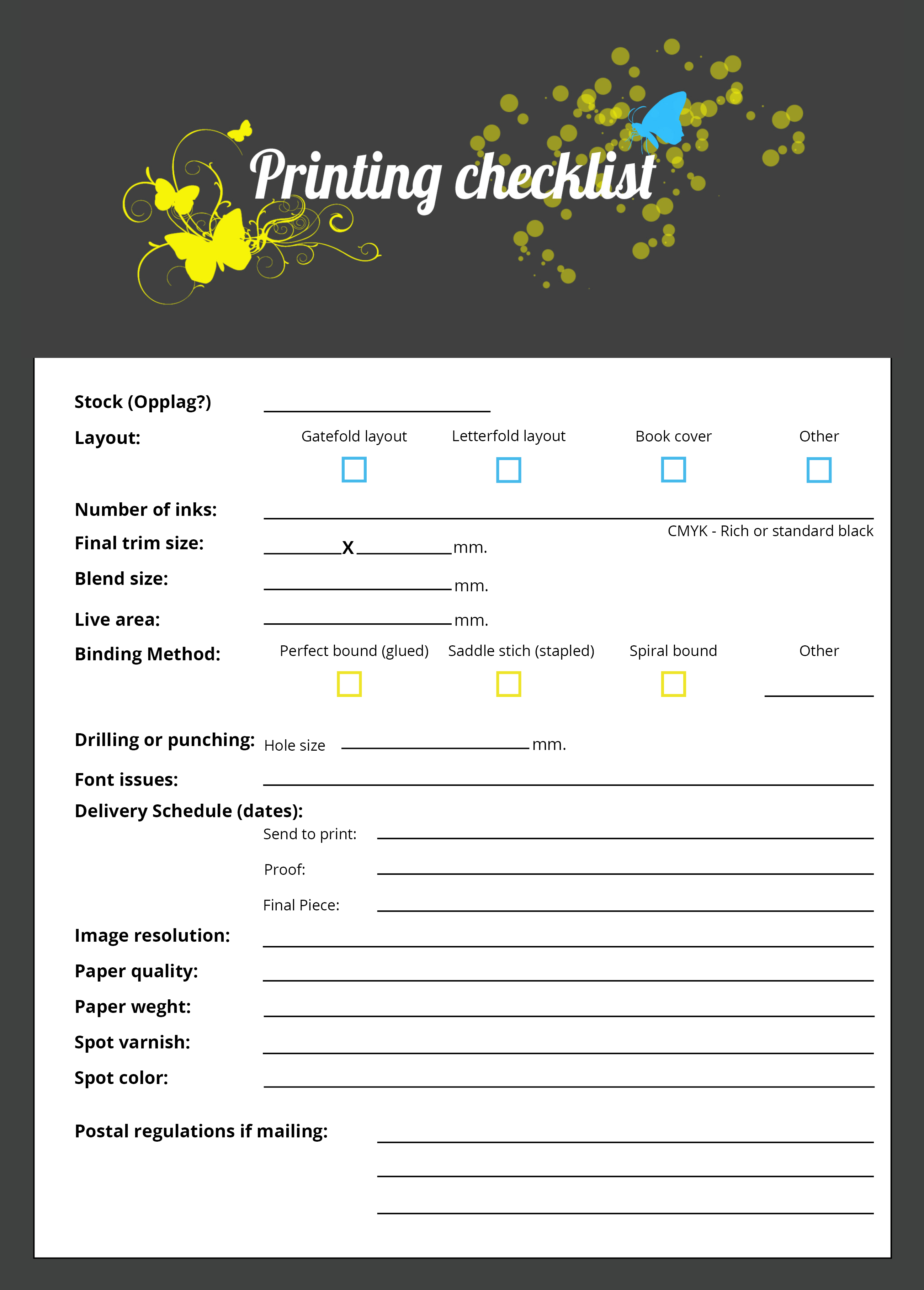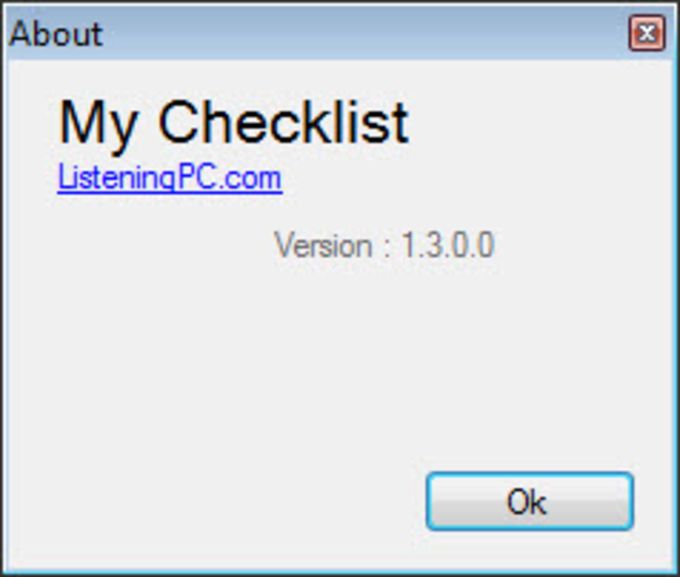


A spectrum analysis is nothing new, what it does is measure the power and magnitude of an input signal versus frequency. To check the true quality of an audio file is to run a spectrum analysis.
#MY CHECKLIST MP3 320KBPS#
“The bitrate/audio quality that shows up in your iTunes or download website doesn’t always tell the truth”ĭownloading mp3’s for free, ripping from YouTube or SoundCloud or even an official promo from a record label (as we have encountered ourselves) can never guarantee 320kbps in an mp3 file, even though it says so on your iTunes or other media player. The lower the quality, the smaller the files size and the more ‘blocky’ the picture becomes.

You can compare it to a the compression of a picture using the JPEG file format. Kilo bits per second is basically a measure for quality. Within the mp3 spectrum, however, there is a lot of difference in quality to be found as well, with 128kbps (lowest) and 320kbps (highest) bit rates being the two border values. In general, both are lossy compressed versions of the original wave form. Still, whether the purists like it or not, mp3 has been the dominant file type ever since we bought our first iPods. For example WAV or FLAC (lossless audio) files benefits the listening experience much, much more. But it’s also the lowest form of digital music, which sacrifices quality for size. Let’s face it, most of our iTunes library consists of mp3s, as the they’re still considered to be the most convenient type of music file. Because the open source tool ‘Spek’ allows you to run a spectrum analysis on every music file type, to see the true quality of the file. We were! But it's easy enough to quarantine or delete bad files before they crash your media player or wreak similar havoc on your tuneage, once MP3 Checker's done the heavy lifting for you.Music fanatics and DJs claiming to only (illegally) download music files in the highest quality possible can now put their money where their mouth is. We couldn't access the online Help file, but MP3 Checker proved no challenge to figure out.Īnyone with a substantial digital music collection ought to download and run MP3 Checker - and you might be surprised at what it finds.
#MY CHECKLIST MP3 UPDATE#
MP3 Checker's scan options include telling it not to report minor glitches as bad or update ID3 tags on verified MP3s and to move corrupted MP3s to a quarantine file we could designate for further action. We chose not to delete the bad MP3s until we'd made good files from the sources, but we can see how that might not be desirable (or feasible) in very large collections. Under Bad MP3s, it listed each suspicious file by its location and included the reason each was flagged - typically because of repeated frames.

MP3 Checker quickly sifted our music collection, identifying five bad MP3s out of the lot and displaying the details in a pop-up that also listed the total playing time of our music files and the total amount of data it processed. We browsed to our Music folder and clicked Scan. Check boxes let us choose whether to scan only MP3s or data files, too. MP3 Checker is a simple tool with an appropriately simple interface: a main window with tabs labeled Bad MP3s and Good MP3s above a folder entry field, and buttons to open the target folder directly, delete all bad MP3s automatically, and set the options. With drag-and-drop and file quarantining, it's fast, easy to use, and safe.
#MY CHECKLIST MP3 FREE#
MP3 Checker is a simple, free tool that scans your MP3s for any kind of corruption, as long as it's data corruption it can't tell good music from bad, only good files from bad. Any kind of data file can be corrupted, but your MP3s are especially vulnerable to damage and corruption since there's a lot of them, they tend to hang around for years, and all kinds of programs handle them.


 0 kommentar(er)
0 kommentar(er)
